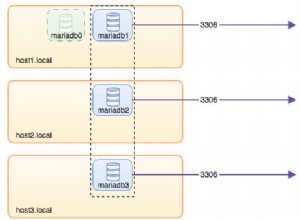Eine Many-To-Many-Assoziation mit zusätzlichen Werten ist keine Many-To-Many, sondern tatsächlich eine neue Entität, da sie jetzt einen Identifikator (die beiden Beziehungen zu den verbundenen Entitäten) und Werte hat.
Das ist auch der Grund, warum Many-To-Many-Assoziationen so selten sind:Sie neigen dazu, zusätzliche Eigenschaften wie sorting darin zu speichern , amount usw.
Was Sie wahrscheinlich brauchen, ist so etwas wie das Folgende (ich habe beide Beziehungen bidirektional gemacht, ziehen Sie in Betracht, mindestens eine davon unidirektional zu machen):
Produkt:
namespace Entity;
use Doctrine\ORM\Mapping as ORM;
/** @ORM\Table(name="product") @ORM\Entity() */
class Product
{
/** @ORM\Id() @ORM\Column(type="integer") */
protected $id;
/** ORM\Column(name="product_name", type="string", length=50, nullable=false) */
protected $name;
/** @ORM\OneToMany(targetEntity="Entity\Stock", mappedBy="product") */
protected $stockProducts;
}
Speichern:
namespace Entity;
use Doctrine\ORM\Mapping as ORM;
/** @ORM\Table(name="store") @ORM\Entity() */
class Store
{
/** @ORM\Id() @ORM\Column(type="integer") */
protected $id;
/** ORM\Column(name="store_name", type="string", length=50, nullable=false) */
protected $name;
/** @ORM\OneToMany(targetEntity="Entity\Stock", mappedBy="store") */
protected $stockProducts;
}
Bestand:
namespace Entity;
use Doctrine\ORM\Mapping as ORM;
/** @ORM\Table(name="stock") @ORM\Entity() */
class Stock
{
/** ORM\Column(type="integer") */
protected $amount;
/**
* @ORM\Id()
* @ORM\ManyToOne(targetEntity="Entity\Store", inversedBy="stockProducts")
* @ORM\JoinColumn(name="store_id", referencedColumnName="id", nullable=false)
*/
protected $store;
/**
* @ORM\Id()
* @ORM\ManyToOne(targetEntity="Entity\Product", inversedBy="stockProducts")
* @ORM\JoinColumn(name="product_id", referencedColumnName="id", nullable=false)
*/
protected $product;
}




